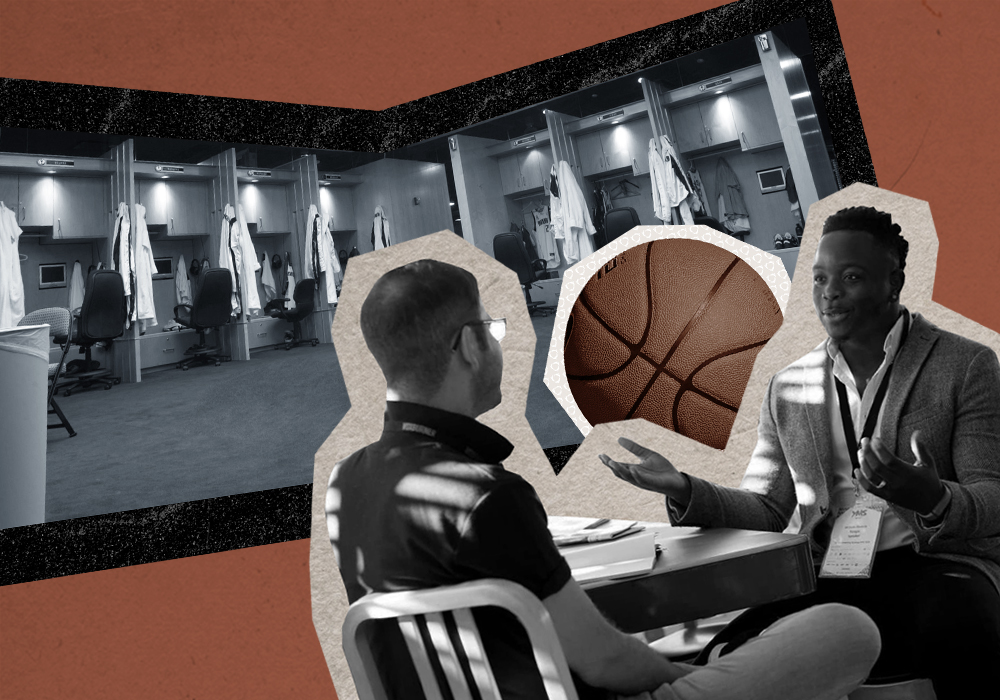Identifying, attracting and retaining talent is a key factor in the success of any company. Perhaps nowhere is this more true than in professional sports. Just as in other businesses, there are specialized professionals hard at work scouting and recruiting the best possible individuals to round out a pro team’s roster. Unlike many of us in the HR field, however, these executives operate under intense media scrutiny, with budgets exceeding the GDP of some small countries. Nonetheless, there are similarities between recruiting business and sports talent.
1. Staff Can Be a Valuable Tool in the Recruitment Process.
Here’s a news flash to absolutely nobody in the HR field: employees talk. Staff members that are excited, engaged and generally pleased with their employment can be an outstanding recruitment tool.
The same applies in sports, particularly in the NBA. As teams re-shuffled their rosters during this summer’s exciting free-agency season, a lot of attention was paid to the efforts players made in recruiting one another. Former Toronto Raptor Kawhi Leonard landed in Los Angeles where he will play for the Clippers. Fellow star Paul George will be joining him. It was widely reported that the former was instrumental in the recruitment of the latter.
“It’s become huge,” says NBA player Damian Lillard, “because sometimes the coaches and the front offices, they don’t have as much power as the players. The players are so friendly now.”[1]
2. Data is a Huge Consideration in Analysing Candidates.
While some aspects of the Brad Pitt drama ‘Moneyball’ may have been fabricated for cinematic effect, the essence of the story is true: Major League Baseball has undergone a statistical revolution in recent years. In today’s baseball environment, data is as plentiful as peanuts and Cracker Jacks. Analysts pour over mounds of information using an ever evolving set of statistics to re-examine traditional notions of player value.
As described in a recent blog post , artificial intelligence is being increasingly utilized by recruiters across industries to measure the aptitudes of candidates. Just like in baseball, human resources professionals balance insights from their research, systematic assessments and lessons learned from their personal experience in the field.
3. Know Where You’re Going.
Professional sports teams on the verge of success often look to trade promising prospects for players more capable of providing an immediate impact. They find willing partners in down-and-out teams looking for future stars to aid in the rebuilding effort. While most other businesses operate under different environments than these sports teams, the underlying point remains true: sometimes you’re structuring your workforce for today, while other times you’re thinking about tomorrow. Knowing where your company, and industry, are headed can inform more strategic hiring decisions.
4. Sometimes It’s About the Money, Sometimes It’s Not.
Star NFL running back Jerome Bettis had only one problem as he contemplated retirement in 2004: he looked at his fingers and saw no Super Bowl rings. He took a pay cut, returned to his Steelers, and was rewarded with a championship. Other stars, such as Tom Brady, have willingly taken less money than the free market would have provided in order to remain in favourable organizations or to clear up money to recruit additional players. [2]
Recruitment efforts in other industries would do well to highlight the opportunity for legacy or career development inherent in their company. The opportunity to shine can hold appeal to potential candidates. It’s important to remember, however, that this is simply the cherry on top, not the whole sundae. As a rule, top executive talent, much like superstar quarterbacks, like to get paid.
5. You Can Get Good Help for Free, But It’s Controversial.
NCAA revenue reached one billion dollars in the 2016-17 season. The money went to several places, but the players’ pockets were not among them.[3] Although some reforms have been made, it remains a controversial subject. Also controversial is the use of unpaid interns in the corporate world. Much like the NCAA, unpaid internships can be a stepping stone to future riches, but do little to provide immediate financial help.
6. You Must Weigh Readiness vs. Potential.
Something to be carefully considered when making a new hire is the matter of subject vs. function experience. Is it preferable to hire the person who’s ready to do the job adequately today, or the one who may lack direct experience but shows aptitude to excel in the future? Scouts across the sporting spectrum face a similar dilemma each year on draft day as they measure polished prospects against more raw players with potentially higher ceilings. In sports, as in business, it’s a decision that often comes down to immediate needs vs. long term strategy.
Recruiting top talent is a matter that cannot be taken lightly. In business, as in sports, it can be the key to success. Your budget to recruit a new prospect is likely less than $30M/year, and your place of work probably has fewer than 50,000 spectators, but there are lessons to be learned from the hiring practices of professional sports teams.




